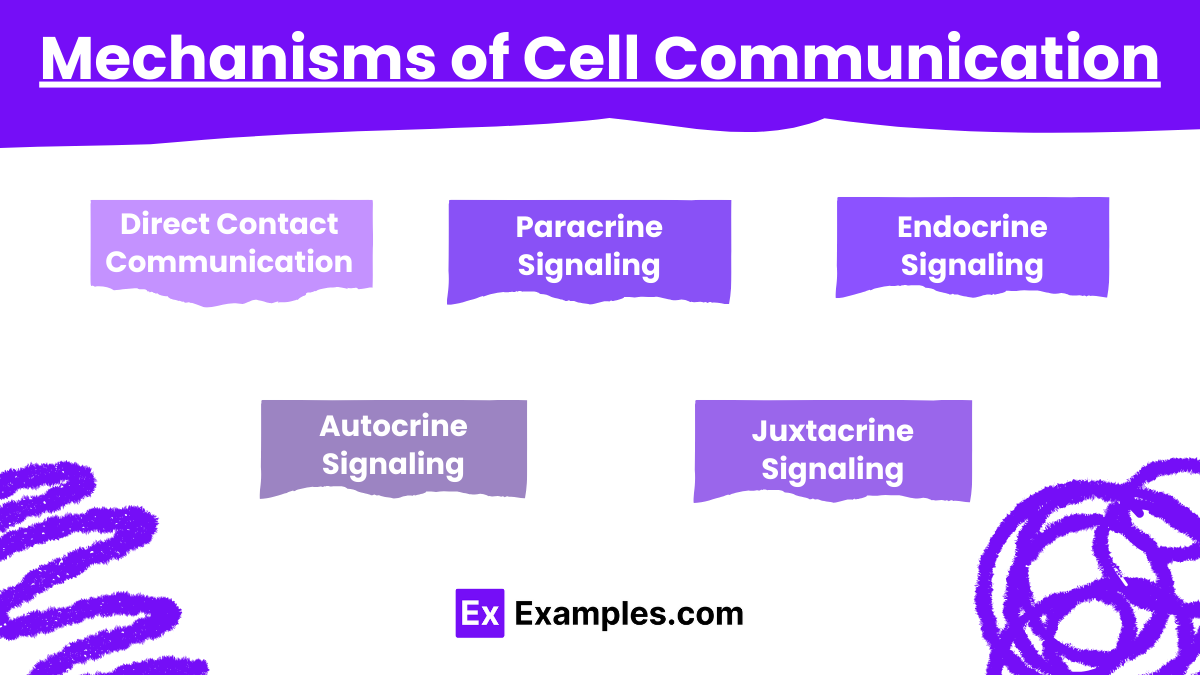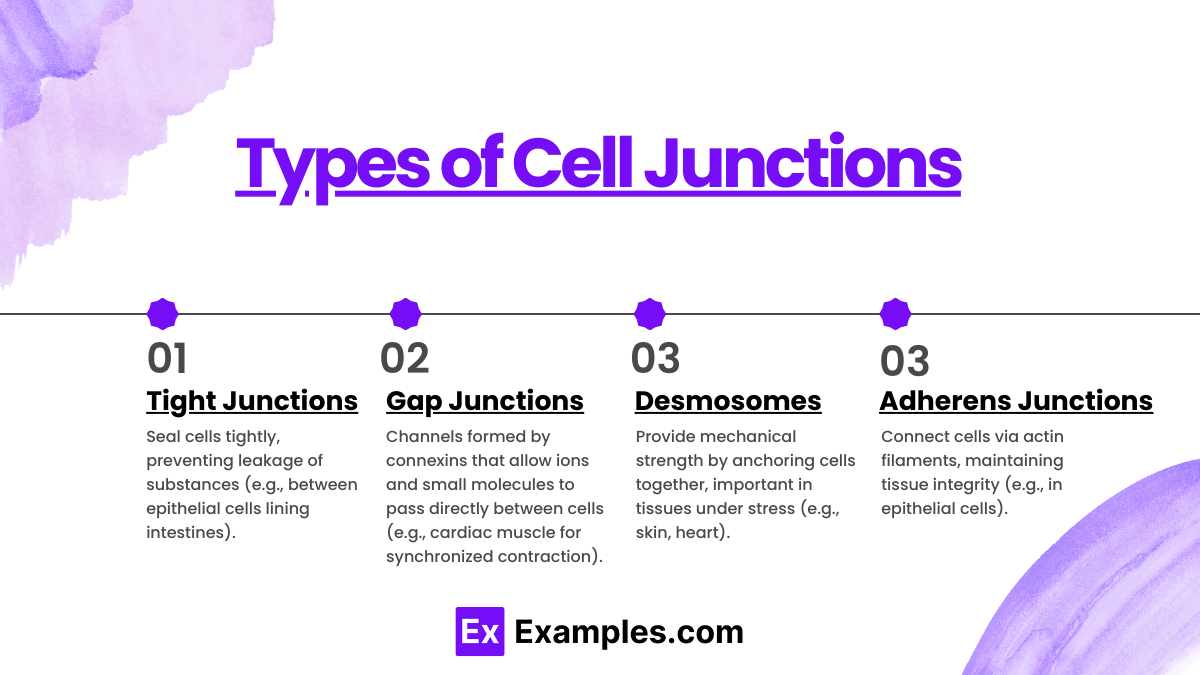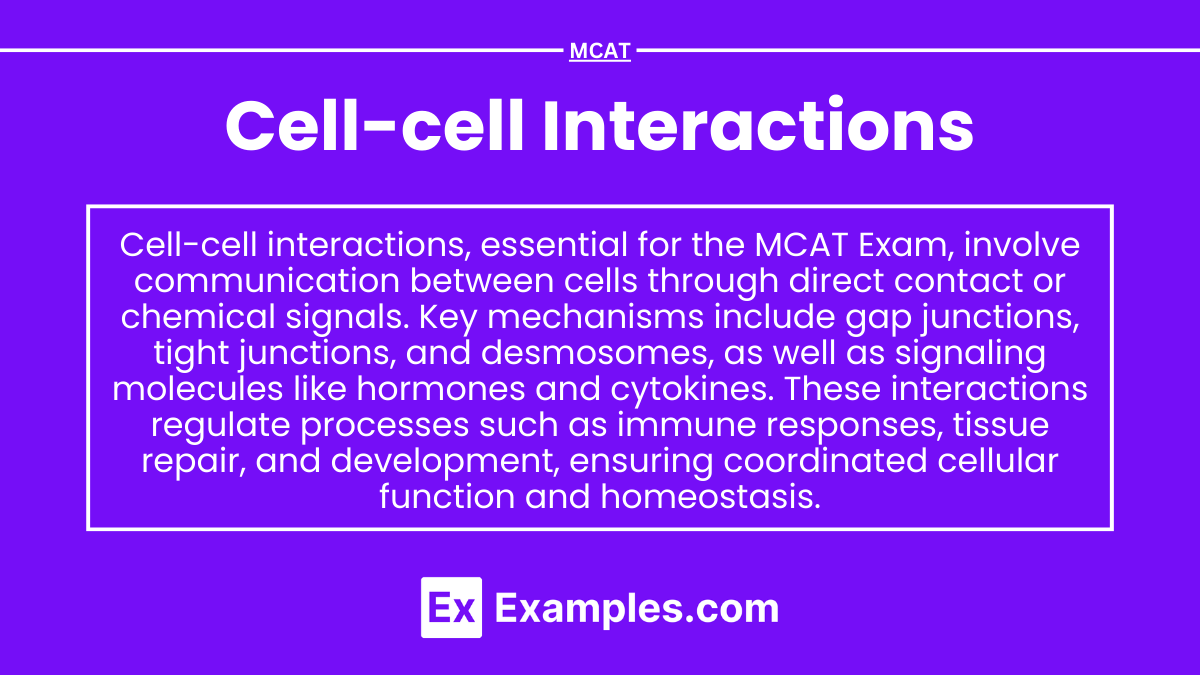Cell-cell Interactions

- Notes
Preparing for the MCAT necessitates a thorough understanding of cell-cell interactions, an essential aspect of cellular biology. Mastery of how cells communicate, adhere, and coordinate functions through signaling pathways and junctions is crucial. This knowledge is vital for comprehending tissue organization, immune responses, and overall physiological function, contributing to MCAT success.
Learning Objective
In studying “Cell-Cell Interactions” for the MCAT, you should learn to understand the mechanisms by which cells communicate and coordinate their activities, including signaling pathways, cell adhesion molecules, and junctions. Analyze how these interactions influence tissue formation, immune responses, and cellular behavior. Evaluate the role of extracellular matrix components and cytokines in mediating cell-cell interactions. Additionally, explore the implications of these interactions in health and disease, and apply your understanding to interpret experimental data and scenarios in MCAT practice passages. This knowledge is essential for grasping the complexities of cellular organization and function.
Introduction to Cell-Cell Interactions

Cell-cell interactions refer to how cells communicate and coordinate their activities. These interactions ensure proper functioning of tissues, organs, and physiological systems by regulating cell behavior, differentiation, and responses to environmental changes.
Key Points:
- Essential for processes like immune responses, wound healing, and development.
- Involve direct contact between cells or chemical signaling through molecules like hormones and cytokines.
Mechanisms of Cell Communication

- Direct Contact Communication
- Involves membrane proteins from adjacent cells interacting directly (e.g., immune cells recognizing infected cells).
- Paracrine Signaling
- Local signaling where cells release molecules that affect nearby cells (e.g., neurotransmitter release).
- Endocrine Signaling
- Long-distance communication using hormones secreted into the bloodstream (e.g., insulin controlling glucose uptake).
- Autocrine Signaling
- Cells respond to signals they themselves produce (e.g., growth factors promoting cell proliferation).
- Juxtacrine Signaling
- Requires direct contact, with signals passed through membrane-bound proteins between adjacent cells.
Types of Cell Junctions

- Tight Junctions
- Seal cells tightly, preventing leakage of substances (e.g., between epithelial cells lining intestines).
- Gap Junctions
- Channels formed by connexins that allow ions and small molecules to pass directly between cells (e.g., cardiac muscle for synchronized contraction).
- Desmosomes
- Provide mechanical strength by anchoring cells together, important in tissues under stress (e.g., skin, heart).
- Adherens Junctions
- Connect cells via actin filaments, maintaining tissue integrity (e.g., in epithelial cells).
Examples
Example 1:Cadherin-Mediated Cell Adhesion
- Mechanism: Cadherins facilitate homophilic binding between cells, maintaining tissue integrity.
- Example: E-cadherin is critical in epithelial tissue organization. Loss of E-cadherin is associated with cancer metastasis.
Example 2:Integrin-ECM Interactions
- Mechanism: Integrins connect cells to the extracellular matrix (ECM) and relay signals.
- Example: Integrins play a role in wound healing by mediating cell migration on fibronectin.
Example 3:Gap Junctions in Cardiac Muscle
- Mechanism: Gap junctions allow ions to pass between adjacent cells, enabling synchronized contraction.
- Example: In cardiac muscle, connexins form channels that facilitate electrical coupling for heartbeats.
Example 4:Tight Junctions in the Intestinal Epithelium
- Mechanism: Tight junctions create a seal between epithelial cells, preventing leakage of substances.
- Example: In the intestines, they regulate nutrient absorption and prevent harmful substances from entering the bloodstream.
Example 5:Cytokine Signaling in Immune Response
- Mechanism: Cytokines facilitate communication between immune cells to coordinate responses.
- Example: Interleukin-6 (IL-6) plays a key role in inflammation and fever during infections.
Practice Questions:
Question 1
Which type of cell junction allows direct exchange of ions and small molecules between adjacent cells?
A) Tight junctions
B) Desmosomes
C) Gap junctions
D) Hemidesmosomes
Answer: C) Gap junctions
Explanation:
Gap junctions are specialized structures made of connexins that allow ions and small molecules to pass directly between neighboring cells. This type of communication is essential in tissues like the heart, where electrical signals need to propagate rapidly between cells for synchronized contraction.
Question 2
Which of the following is a function of cadherins in cell-cell interactions?
A) Facilitating cell-ECM adhesion
B) Forming tight junctions between epithelial cells
C) Allowing passive diffusion of ions between cells
D) Maintaining tissue structure through homophilic binding
Answer: D) Maintaining tissue structure through homophilic binding
Explanation:
Cadherins are transmembrane proteins responsible for homophilic binding (binding with the same type of cadherin on adjacent cells). They play a crucial role in maintaining the structure of tissues and are especially important during embryonic development and epithelial cell adhesion.
Question 3
Which of the following best describes the role of integrins in cell-cell interactions?
A) Facilitating direct ion exchange between neighboring cells
B) Linking the extracellular matrix to the cytoskeleton
C) Sealing adjacent cells to prevent leakage
D) Binding cytokines to regulate immune response
Answer: B) Linking the extracellular matrix to the cytoskeleton
Explanation:
Integrins are transmembrane receptors that connect the extracellular matrix (ECM) to the cytoskeleton inside the cell. They play an essential role in processes like cell migration, tissue repair, and signal transduction, mediating interactions between cells and their surrounding environment.

